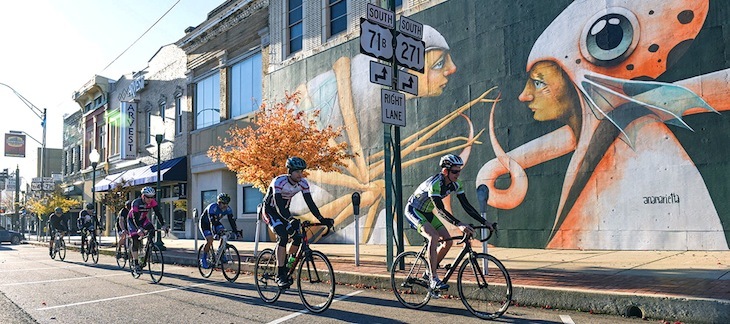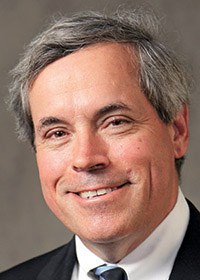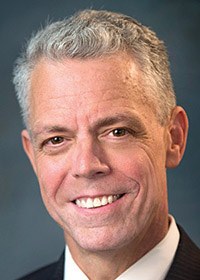Tourism roundtable: Arts, history will drive state’s visitor industry
by August 8, 2018 5:39 pm 1,104 views

Arkansas has long touted its “Natural State” motto to draw visitors to the state. In recent years, tourism tax collections have set new records. In 2017, the 2% tax on lodging and attractions collected $15.89 million, a 2.8% increase from the previous year’s amount of $15.46 million.
Kane Webb, executive director of the Arkansas Department of Parks and Tourism, and Mark Christ, community outreach director who oversees the Arkansas Historic Preservation Program at the Department of Arkansas Heritage, sat down with Talk Business & Politics CEO Roby Brock to discuss the past, present and future of Arkansas tourism and heritage. What follows is a partial transcript of their discussion, edited lightly for clarity.
Brock: We have had some strong tourism numbers for years, particularly this last year. It’s been, once again, another solid year of performance. Where are these tourists coming from, and what are you doing to draw them here?
Webb: We are just marketing what we have, which is a great state. Yeah, the numbers are pretty phenomenal. The last three years, we’ve had record breaking 2% tourism tax numbers and, as you know, the 2% tourism tax is largely a “heads in beds” hotel lodging and attraction tax. So it’s a really good way, a good barometer to see who’s coming to Arkansas and spending the night.
We recently had $16 million in tax revenue, which is about 30% above where it was five years ago. I mean, it’s crazy, isn’t it? It’s taking off like that, so we get that money, we reinvest it into marketing and promoting the state, and I think a lot of what we’re seeing is that Arkansas has developed a lot of new rides over the last 15, 20 years. Everything from the [William J. Clinton] Presidential Library to Crystal Bridges [Museum of American Art], to now we’re seeing things like the Murphy Arts District in El Dorado [and] the Johnny Cash Boyhood Home [in Dyess], which is becoming a real international attraction.
And we’re building our tourism infrastructure: more trails, mountain biking has become a big deal in Northwest Arkansas, and cycling throughout the state. And we have tapped into a period of time where Millennials and Boomers want to go to a state for what I call “soft adventure.” They want to get out. They want to experience some local stuff — this ties into heritage tourism — to see what’s a little bit different out there, and Arkansas has a lot to offer, a variety of things to offer. So it’s partly timing and partly the content we have here.
Brock: And this tourism heritage that we’re talking about, Mark, is something you’re seeing with your background in historic preservation and oversight of what you do. I don’t know if it’s booming, but it certainly is top of mind for a lot of these smaller communities that might not have a big manufacturing plant that’s going to locate in their town. But they can create a creative economy around it.

Christ: Right. We have the Main Street Arkansas program as part of the [Arkansas] Historic Preservation Program, and they work with primarily small towns around the state to revitalize their downtown areas. And that helps to bring tourists into the traditional commercial cores and, you know, formally vacant buildings are suddenly thriving business, so it’s a big deal.
Brock: I was in Springdale recently, and that Springdale downtown location has some really cool old buildings in it, and I think it’s about to really blossom and take off.
Webb: I think you’re seeing that. That’s a great example of what I just saw. We had our commission meeting in Batesville this week to talk about a town that’s using the old downtown and revitalizing itself. You know, restaurants, posh restaurants in old buildings, the Melba Theater has been totally redone. You can walk out of the restaurant and see life up and down the main roads of downtown Batesville, and then they’ve also managed to incorporate some new things. They built a $22 million aquatic and community center, which is just incredible, so they’ve gotten on the “tourism as economic development” bandwagon.
Brock: So I’m giving you a chance right now, Mark: Is there enough money earmarked for this preservation and this heritage tourism that we need to do? Make your pitch.
Christ: Well, we use the funding that we do have in heritage to work with folks around the state to try to develop places as heritage tourism destinations. We have grant programs specifically through historic preservation that we can work with, especially buildings that are owned by nonprofits to, you know, preserve and develop them as heritage tourism destinations.
Brock: I want to talk about World War I. We’re in the centennial celebration of that war and the Department of Heritage has put together a huge series of events over the course of this year to try to do as much as possible recognize that. It is a bit of a forgotten war now because there’s nobody alive from that generation anymore. Tell me, just in general, what you guys have been trying to do with that.
Christ: The governor created the Arkansas World War I Centennial Commemoration Committee two years ago, and I’m the Department of Heritage representative on the committee. Our mission is to, you know, commemorate. You can’t really celebrate it. It was such a horrible war.
The centennial of the Great War and we’ve had a number of events over the years. One of the big things we did was in partnership with the Arkansas Forestry Commission. We have placed a World War I memorial tree in each of Arkansas’ 75 counties, which was a good deal.
We have a seminar coming up at the Old State House on Aug. 18, where we will be talking about the legacy of the Great War, and our wrap-up that we’re working on right now is … of course, the war ended on Nov. 11, Armistice Day, so on Sunday, Nov. 11 this year, we’re calling for people and organizations around the state to ring a bell 11 times at 11 o’clock on the 11th day of the 11th month, which will be exactly 100 years after the Armistice took effect.
Brock: Talk to me a little bit about war tourism, Kane. In the South, the Civil War is a big part of it. Mississippi capitalizes on that, but Arkansas has a lot, too.

Webb: You know, we have a state park that’s basically a Civil War battlefield, and there’s still a great deal of interest in that. Real quick, we have a state park in Manila named after a World War I hero, Herman B. Davis.
Christ: Herman Davis was the most decorated Arkansas soldier in World War I, and he didn’t live too long after the war. He swallowed some gas, and it ended up killing him a few years later. And he was such a self-effacing guy. The people wanted to see his Croix de Guerre and his other medals. He got his fishing tackle box out, and that’s where he kept them. But it’s a great monument to a brave Arkansas soldier.
Webb: One of our unique state parks. Talking about war history, just history in general has become, I think, a big drawing card for visitors. And this year, we’ve launched this as part of Travel South [USA], the U.S. Civil Rights Trail, and that’s a big part of history of the South.
At a recent international conference, we had some people representing out there. I think it was [on] the West Coast, and 11 countries were there. Eight said they had a keen interest in civil rights history in the United States. That would draw them here to the United States as a brand new program.
Arkansas [is] representative, clearly. We’ve had some sides here. [Little Rock] Central High is the iconic one, the Daisy Bates House, John Deering’s sculpture on the Capitol grounds of the Little Rock Nine. I think we’re going to see a lot of tourists who are going to make that trail throughout the South. You know, from here, you go to the Lorraine Motel, to Selma, the Pettus Bridge in Selma, that type of thing.
Brock: A lot of times, tourism and heritage is about creating new things. You’ve got to always have new things to enter into the mix. What’s big and new that we might see soon from your house?
Webb: I think what we’re seeing — and this is exciting to me — is almost an arts corridor developing through Arkansas. If you think about what’s going on in Northwest Arkansas with Crystal Bridges, the [Scott Family] Amazeum, the Walton Arts Center’s recently been expanded, the Momentary’s going to open soon …
Brock: Brightwater: [A Center for the Study of Food in Bentonville].
Webb: Brightwater, oh yeah. They just opened another little section of Brightwater [on July 21] called The Holler. You go down to Fort Smith, you’ve got the [United States] Marshals Museum that’s on track for late next year, early 2020, [and] the Unexpected project, which is effectively an art museum outside and downtown on the walls of these old buildings.
Art, come to Little Rock. You’ve got the art center that’s going to be renovated and expanded. Take it down to El Dorado where the Murphy Arts District has just opened Phase 1. They’ve got Phase 2 to come. That’s a $100 million project. That’s exciting to me, that arts are going to start attracting people from other states to Arkansas. It’s new and shiny and goes with our heritage tourism.
Brock: Mark and Kane, thank you both very much. Appreciate you for being here.
You can catch more of the conversation on this subject in the video below.
